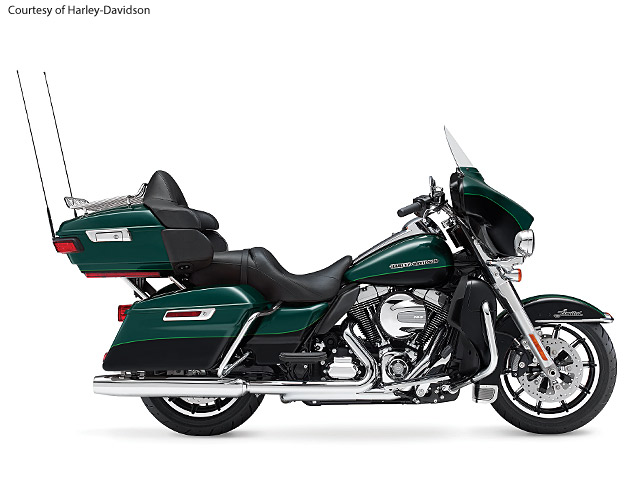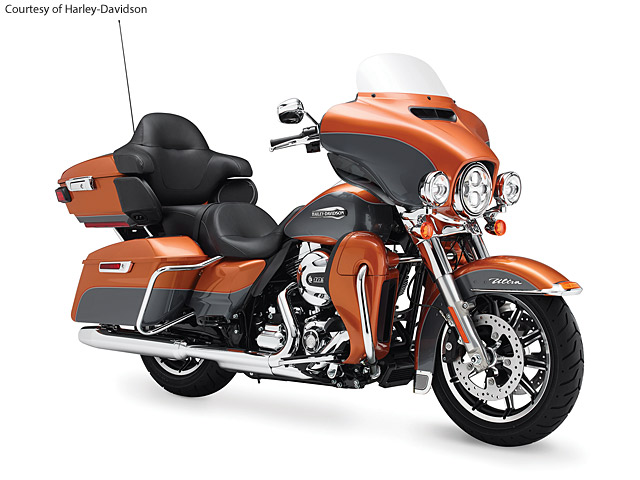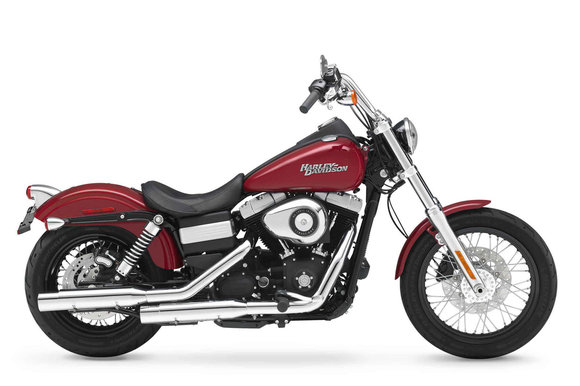Harley-Davidson history is long and proud and began at the start of the 20th century. The beginnings of this American icon were very humble. William S. Harley, born in 1880 and Arthur Davidson, born in 1881 lived next door to each other in Milwaukee, Wisconsin.
While the two friends were working in a local manufacturing plant, they decided to build an internal combustion engine to be used on bicycles. They became friends with a German co-worker who was familiar with the De Dion engine already being used in Europe. With his help, they designed a small air-cooled engine.
Arthur’s brother, Walter Davidson, who was working as a machinist was recruited for their bicycle engine project. They built a little engine with a bore and stroke of 2 1/8 x 2 7/8 inches. Soon after they completed the engine, they realized it didn’t have enough power.
In 1902, they designed a second engine with the help of another talented mechanic by the name of Ole Evinrude. You’ve probably heard the name Evinrude before. This new engine had the same displacement as their previous engine but with a larger flywheel and over/under pocket valves. With three horsepower, it had the power they were looking for.
In 1903, Davidson brothers Arthur and Walter along with William S. Harley built a single cylinder motorcycle in a wooden shed built by cabinet making father, William C. Davidson. This was the first Harley-Davidson factory which was about 10 x 15 feet. The Davidson brother's aunt Janet painted the pin-stripes on the first few Harleys. Harley-Davidson built and sold three single-cylinder motorcycles in 1903. They built and sold three more motorcycles in 1904.
In 1905 the first Harley-Davidson to be produced in significant numbers was the Silent Gray Fellow named for its quite operation and gray color. These were 450cc single cylinder bikes using a bicycle-style frame. To slow down and stop the rider had to peddle backwards.
Following the official formation of the company in 1907, Arthur signed up over 800 dealers in ten years. These dealers were in all of America’s then 48 states. Just five years after the first Harleys were made and sold the Detroit Police bought a fleet of motorcycles. By 1925, over 2,500 police units in the US were riding Harley-Davidsons.
The first Harley-Davidson V-Twin was produced in 1909. The first V-Twin engines cylinders were angled at 45 degrees, which has become a hallmark. Harley-Davidson used what is called a knife and fork arrangement to link the connecting rods to the crankshaft at a common point. The first V-Twin had valve trouble and was dropped for 1910. Harley-Davidson realized that V-twins were the future and redesigned the engine. The V-Twin was reintroduced for 1911 and was a success.
A big part of Harley-Davidson history is Harleys contribution to U.S. Military efforts. In 1918 Harley supplied thousands of motorcycles to the military to be used in World War I. Almost half of all Harley-Davidsons produced that year were sold to the military. The first American GI to enter Germany was Roy Holtz, riding a Harley-Davidson.
Even though it's not a big part of Harley-Davidson history, Harley became involved in racing to prove the dependability of their bikes. Harley’s first and notable success was in 1908. Walter Davidson won the Jack Pine Endurance run. Not only did the bike prove its dependability, the bike won the economy contest with 188 miles per gallon. In 1921 Harley becomes the first motorcycle to win a race with an average speed of 100PMH on a board track in Fresno, CA. Another early success story was the record of Joe Petrali, who set a record of 136.183MPH at Daytona Beach in 1937. Early Harley racing teams adopted a pig as their mascot and carried it on victory laps. This might have been the start of the term HOG. Racing was not always a priority for Harley but their riders have had great success over the years.
In 1941 America joins World War II. Harley produces the Model WLA which features blackout lights, high clearance fenders and metal leg shields. Almost all of Harley-Davidsons output was devoted to the military from 1941 to 1945. By the end of the war, Harley produced 88,000 WLA models for the U.S. Military and around 20,000 for the Canadians.
When looking at Harley-Davidson history, we can't forget the many World War II ex-servicemen who came back to small town America. While Harley-Davidson's civilian production had all but ceased during the war, there were plenty of army surplus motorcycles to be bought. Many of these ex-servicemen started a trend by buying and customizing these bikes. They removed or shortened the fenders to reduce weight. These bikes became known as Bobbers. These changes ultimately lead to the evolution of the Chopper.
After a post-war boom, the company’s sales were damaged by the influx of cheaper Japanese and British imports. This competition ironically caused a resurgence of interest in motorcycles, which the company profited from. Harley was bought by American Machine and Foundry (AMF) in 1969. Harley-Davidson history is full of ups and downs. Some of us are old enough to remember that Harley went through some hard times during the AMF years. In 1981 senior management bought the company back from AMF. Harley slowly came back in the 80s and now Harley-Davidson is one of the most recognized names in the world. In 1983 Harley Owners Group (HOG) was formed with 30,000 members in the first year. Now there are about a million HOG members world wide. After 105 years of Harley-Davidson history, Harley-Davidson Motorcycles are more popular than ever.
HARLEY-DAVIDSON 2015 Models
HARLEY-DAVIDSON 2012 Models
While the two friends were working in a local manufacturing plant, they decided to build an internal combustion engine to be used on bicycles. They became friends with a German co-worker who was familiar with the De Dion engine already being used in Europe. With his help, they designed a small air-cooled engine.
Arthur’s brother, Walter Davidson, who was working as a machinist was recruited for their bicycle engine project. They built a little engine with a bore and stroke of 2 1/8 x 2 7/8 inches. Soon after they completed the engine, they realized it didn’t have enough power.
In 1902, they designed a second engine with the help of another talented mechanic by the name of Ole Evinrude. You’ve probably heard the name Evinrude before. This new engine had the same displacement as their previous engine but with a larger flywheel and over/under pocket valves. With three horsepower, it had the power they were looking for.
 |
| Harley-Davidson Shed |
Following the official formation of the company in 1907, Arthur signed up over 800 dealers in ten years. These dealers were in all of America’s then 48 states. Just five years after the first Harleys were made and sold the Detroit Police bought a fleet of motorcycles. By 1925, over 2,500 police units in the US were riding Harley-Davidsons.
The first Harley-Davidson V-Twin was produced in 1909. The first V-Twin engines cylinders were angled at 45 degrees, which has become a hallmark. Harley-Davidson used what is called a knife and fork arrangement to link the connecting rods to the crankshaft at a common point. The first V-Twin had valve trouble and was dropped for 1910. Harley-Davidson realized that V-twins were the future and redesigned the engine. The V-Twin was reintroduced for 1911 and was a success.
A big part of Harley-Davidson history is Harleys contribution to U.S. Military efforts. In 1918 Harley supplied thousands of motorcycles to the military to be used in World War I. Almost half of all Harley-Davidsons produced that year were sold to the military. The first American GI to enter Germany was Roy Holtz, riding a Harley-Davidson.
In 1941 America joins World War II. Harley produces the Model WLA which features blackout lights, high clearance fenders and metal leg shields. Almost all of Harley-Davidsons output was devoted to the military from 1941 to 1945. By the end of the war, Harley produced 88,000 WLA models for the U.S. Military and around 20,000 for the Canadians.
When looking at Harley-Davidson history, we can't forget the many World War II ex-servicemen who came back to small town America. While Harley-Davidson's civilian production had all but ceased during the war, there were plenty of army surplus motorcycles to be bought. Many of these ex-servicemen started a trend by buying and customizing these bikes. They removed or shortened the fenders to reduce weight. These bikes became known as Bobbers. These changes ultimately lead to the evolution of the Chopper.
U.S. Army Trains Dispatch Riders - Harley-Davidson Bikes
HARLEY-DAVIDSON 2015 Models
HARLEY-DAVIDSON 2012 Models













































































































